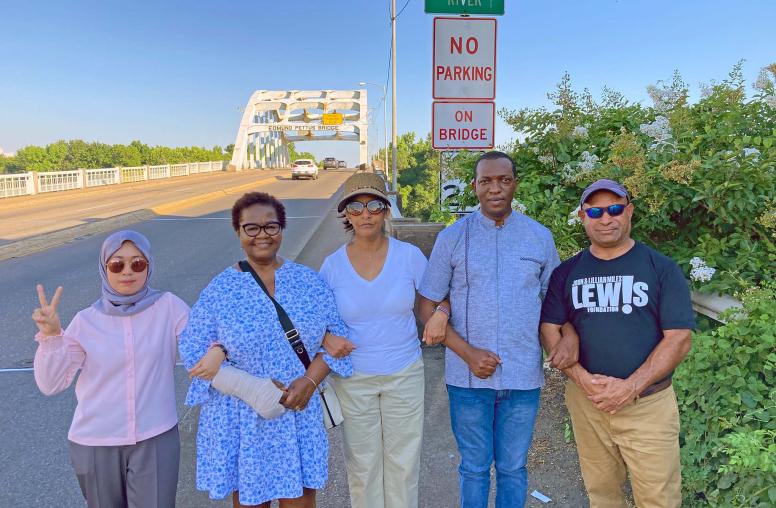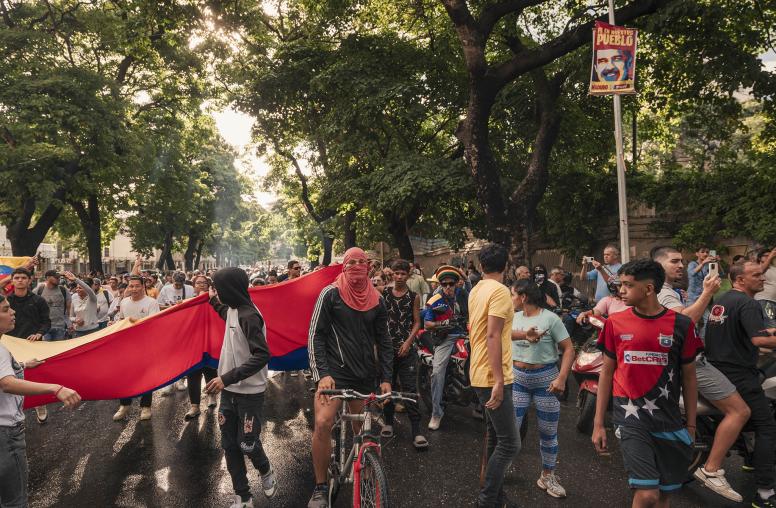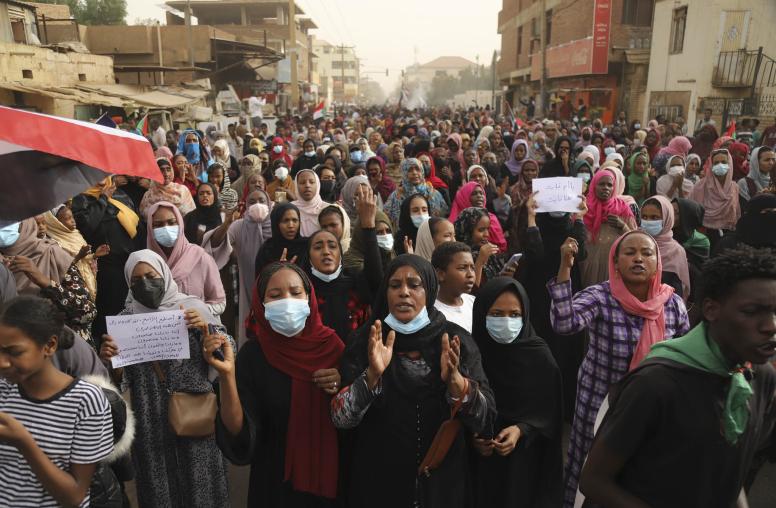Five Things You Need to Know About Foreign Funding for Social Movements
External support can be crucial in the fight against corruption, but it’s not without drawbacks.
From Kenya to Ukraine to Guatemala, citizen-led campaigns are fighting against corruption and demanding government accountability and transparency. Government donors and private foundations have increasingly supported such efforts. But, how does foreign funding impact the goals social movements seek to achieve and the tactics they use to get there? How does foreign funding impact a social movement’s ability to mobilize the masses? And what should external funders consider when supporting social movements? USIP’s Davin O’Regan discusses the finding of a forthcoming USIP Peaceworks examining the impact of external support to social movements focused on transparency and accountability.

How does foreign funding influence the goals that social movements pursue?
Many social movement actors rely heavily on various forms of external support and consider it a critical resource for their work to pursue change-oriented goals. But foreign funding and the conditions that come with it can constrain or alter the goals and tactics of the activists and organizations that comprise social movements. Across dozens of interviews in Kenya, Nigeria, and Ukraine, activists who receive foreign funding and training told us that foreign funders try to influence the types of medium-term goals and activities they pursue. Some activists said they were able to work around this potential hurdle by being more selective in which donors they work with, but this is a coping strategy that is infeasible for many resource-strapped activists.
Donors should aim to work collaboratively with grantees rather than be overly prescriptive. This may lead to more successful policy outcomes as local actors are more knowledgeable of the contexts in which they operate. Indeed, tapping into "local knowledge" and "local legitimacy" is one of the main rationales behind assisting activists and social movement groups—they just know the landscape better than any external funder or trainer and are therefore in a better position to advance reforms. Overly prescriptive or rigid approaches to support compromise this comparative advantage.
Donors should also consider that funding is not the only—and not always the best—form of support they can provide to social movement actors. They can also invest in convening activists and organizations working on similar issues to provide space for strategic planning and movement building. Donors can also funnel more so-called "core" support to movement actors—funds that are not tied to predetermined projects but allow recipients to spend with more flexibility and autonomy, including on their organizational and institutional development.
Are there different tactics employed by social movements receiving foreign funding compared with those relying more on domestic sources of funding?
There is an array of tactics social movements use to advance their goals. Movement actors often hold public events and launch informational campaigns to spread awareness and attract broad support for their campaigns. They also work through institutions using direct advocacy or litigation, while also exerting pressure on politicians and state officials from the outside by engaging in protests, marches, and other mass demonstrations.
Foreign-financed social movement organizations tend to focus more on information and mass messaging activities while relying less on disruptive tactics such as protests and demonstrations than counterparts that were more dependent on domestic funding. This involves use of messaging on radio, social media, or through free flyers and t-shirts as well as some public events in order to influence or shape public perceptions. The groups that received foreign funding were also more likely to directly engage with government officials and institutions to persuade state officials or elected politicians of the value or virtue of certain reforms, sometimes offering to assist the creation or implementation of initiatives to enhance their appeal. Many saw such engagements as laborious but positive and constructive.
What impact does foreign funding have on a social movement’s ability to mobilize the masses?
Social movements get their strength from the citizens and organizations that contribute to and participate in their various activities. Many domestically financed activists and organizations reported that they were more likely to emphasize their ability to garner grassroots support, and many saw their ability to mobilize mass action as their comparative advantage over foreign-funded groups. This advantage may be because foreign support is often purported to undermine the local legitimacy and credibility of recipient organizations and activists, affecting social movements’ ability to generate active and voluntary participation from citizens.
However, many of the activists we interviewed explained that allegations that as recipients of funding or training from overseas sources they were “foreign agents” were largely ignored by prospective constituents. Some reported that foreign funding boosted their popular legitimacy by enhancing the credibility of their independence while organizations and activists who accepted donations from domestic sources were seen as more compromised. Some survey data from Kenya supported this view: citizens did not perceive organizations differently if they received foreign funding.
What are some of drawbacks of foreign funding?
Both foreign and domestically financed participants reported frequent engagement and collaboration among peers. Funding from foreign donors appeared to promote coalition building and foster greater collaboration among recipient activists and organizations. Still, newer and smaller organizations working at the grassroots expressed a sense of exclusion from foreign-funding opportunities even though they often served as subcontractors for many foreign-funded organizations. Some resented this arrangement, describing foreign-funded groups as elitist or a "cartel." This could pose an obstacle to collaboration and scaling up efforts across activists and organizations.
To avoid creating these tensions, donors should offer exclusive funding and training opportunities for newer grassroots organizations and non-traditional civil society actors, which often operate outside urban centers and are not structured in ways that meet donor eligibility requirements. This can mitigate divisions and competition among groups that have similar change-oriented goals.
What else should external donors consider when seeking to support social movements?
It's critical to have a clear and explicit understanding of what social movements are and what they are not. Donors seeking to support reforms in developing countries increasingly emphasize the need to support the grassroots, civil society, and, most recently, social movements, among other bottom-up, citizen-led efforts. Are these terms synonymous and interchangeable, or are there distinctions that matter for what donors should expect in terms of impact and outcome? The differences may have implications for decisions on whom or what to fund and support.
There's no one definition, of course. In academic research, protests are often perceived as a defining characteristic (though not the sole feature) of social movements, and among donors part of the interest in supporting social movement actors seems to stem from the events of the Arab Spring as well as more recent waves of protests in Guatemala, Algeria, Ukraine, and elsewhere. However, it is not always clear that external donors are comfortable underwriting protests or other adversarial and contentious approaches in other countries.
Another angle that academic research on social movements has pursued is to study change-oriented organizations, including those that engage in government advocacy, litigation, press and media events, and public interest research. External donors have been funding this type of work for years, but they usually describe the actors who do it as civil society and nongovernmental organizations. With this understanding, donors have regularly been engaging social movements. However, this does not appear to align with donor desires to engage new types of actors that do different things rather than traditional NGOs for which there is some amount of skepticism.
So, a key first step for external donors as they work to extend resources and support to various independent, citizen-led collective efforts is to be clear about how they distinguish between them and how they inter-relate.


